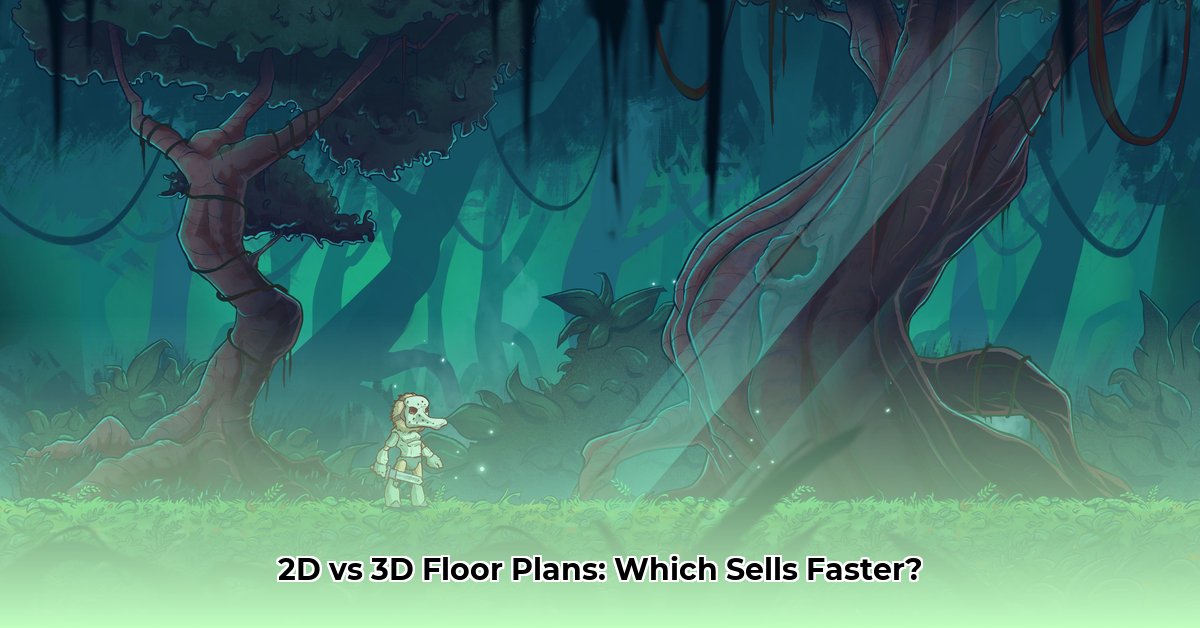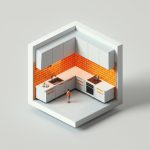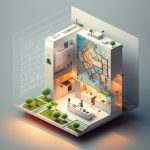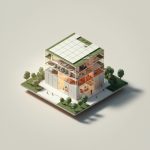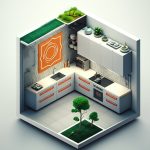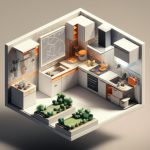Choosing between 2D and 3D floor plans is a pivotal decision that can significantly impact your property sales. Both formats offer distinct advantages, and the ideal choice hinges on your specific objectives. For accurate measurements, check out this helpful resource on floor plan dimensions. This article provides a comprehensive analysis of the pros and cons of each, empowering you to strategically select the perfect plan to accelerate your property sales. We’ll delve into cost considerations, examine how each format enhances buyer visualization, and provide actionable strategies for maximizing your chosen approach – whether it’s 2D, 3D, or a synergistic blend of both.
2D vs 3D Floor Plans: A Comparative Analysis for Faster Sales
The right choice in floor plan can be a game-changer for your sales. Let’s explore the advantages and disadvantages of both options, providing you with the knowledge to make informed decisions, optimize your property listings, and accelerate sales. Are you ready to discover which plan will revolutionize your sales strategy?
Understanding 2D Floor Plans: The Traditional Blueprint
2D floor plans have long been the standard for showcasing a space’s layout from a top-down perspective. These diagrams offer a straightforward and easily understandable overview, illustrating rooms and their dimensions. Their appeal lies in their simplicity, cost-effectiveness, and relatively quick production time, allowing for easy revisions. This makes them well-suited for initial design brainstorming or situations where a rapid overview of a property’s layout is required.
Pros of 2D Floor Plans:
- Budget-Friendly: Creating 2D plans is generally less expensive than creating 3D plans, making them ideal for listings with tighter budgets.
- Speedy Creation: They can be generated quickly, which is especially useful for meeting urgent deadlines or rapidly updating listings.
- Easy to Adjust: Changes and updates can be implemented with ease, providing flexibility during the design process.
- Familiarity: Many potential buyers are already familiar with 2D floor plans, making them easy to understand.
Cons of 2D Floor Plans:
- Limited Visual Appeal: They lack the visual impact needed to capture a buyer’s attention in a competitive market.
- Poor Spatial Awareness: It can be challenging to fully understand the feel and flow of the space from a 2D image, particularly when trying to visualize furniture placement.
- Not Ideal for Everyone: Some potential buyers may find visualization challenging, especially those who benefit from a more intuitive method that showcases the nuances of a property.
3D Floor Plans: Immersive Virtual Experiences
3D floor plans transcend mere diagrams; they offer immersive, interactive virtual tours. Imagine virtually walking through a property online, experiencing its layout and ambiance before physically stepping inside. High-quality 3D plans often incorporate virtual staging, showcasing fully furnished spaces that significantly enhance the property’s appeal. This creates a more engaging experience for potential buyers, enhancing their ability to visualize themselves living in the space.
Pros of 3D Floor Plans:
- Stunning Visuals: They showcase the property’s layout and potential with remarkable realism, generating increased buyer interest and excitement.
- Increased Buyer Engagement: The interactive element substantially boosts engagement and helps buyers visualize themselves living in the space, fostering an emotional connection.
- Potential for Higher Sales: Many real estate professionals believe 3D plans can lead to faster sales and potentially higher offers due to their realism and enhanced perceived value.
- Reduced Need for Physical Viewings: 3D floor plans can answer many buyer questions upfront, reducing the number of in-person visits required.
Cons of 3D Floor Plans:
- Higher Costs: Creating high-quality 3D floor plans requires specialized software, skilled designers, and more rendering time, resulting in a higher price tag.
- Longer Production Time: The creation process is more time-consuming, requiring more effort from designers to ensure accuracy and visual appeal.
- Technical Expertise Required: Professional skills and in-depth software knowledge are crucial for producing high-quality outputs that accurately represent the property.
Head-to-Head: Key Differences Between 2D and 3D Floor Plans
Here’s a summary of the key differences in a comprehensive comparison table:
| Feature | 2D Floor Plan | 3D Floor Plan |
|---|---|---|
| Cost | Low | High |
| Production Time | Fast | Slow |
| Visual Appeal | Basic, functional | High, immersive, realistic |
| Buyer Engagement | Moderate | Excellent |
| Spatial Understanding | Limited | Enhanced |
| Best Use Cases | Quick overviews, initial designs | Marketing, showcasing premium properties, pre-sales |
The Smart Approach: A Hybrid Strategy Combining 2D and 3D
Rather than choosing just one type, consider a hybrid strategy. Use 2D floor plans for initial drafts, space planning, and modifications during the design phase. Then, invest in a stunning 3D model for marketing materials and presentations, especially for properties that justify the investment. This approach leverages the strengths of both to provide comprehensive information while remaining cost-effective. For example, include a 2D floor plan as a downloadable file for detailed reference, alongside the immersive 3D tour.
Actionable Advice Tailored to Your Role
For Real Estate Agents: Experiment with A/B testing listings that feature 2D plans with those that feature 3D plans and carefully compare conversion rates. Prioritize 3D floor plans for luxury properties, unique homes, or properties where high-quality visuals would make a significant impact.
For Marketing Departments: Develop clear guidelines that determine when to utilize 2D plans versus 3D plans, and consistently track results, including leads generated, sales attributed to each representation, and overall marketing ROI. Consistent implementation enhances brand consistency and maximizes marketing impact.
For Property Developers: Incorporate 3D floor plans into pre-construction marketing campaigns to enable potential buyers to visualize the finished product and drive pre-sales. Build a comprehensive library of reusable 3D models for common designs to streamline marketing efforts for future projects.
For Homeowners/Sellers: Carefully weigh the budget against your marketing objectives. 3D floor plans may be crucial for selling a unique or high-value property, while 2D plans may suffice for a standard home in a less competitive market. Explore interactive 3D floor plans available on major real estate portals to significantly enhance your listing’s appeal.
Ultimately, the “best” approach depends on your specific needs, budget constraints, and marketing objectives. Don’t hesitate to seek professional assistance from experienced real estate marketers or visual content creators.
How to Calculate ROI of 3D Floor Plans in Real Estate Marketing
Key Takeaways:
- 3D floor plans offer a more engaging and informative experience for potential buyers.
- Buyer understanding of the property often improves, leading to shorter sales cycles.
- Increased buyer confidence is a key benefit of utilizing 3D floor plans, leading to quicker purchasing decisions.
The measured effectiveness varies depending on property type, location, target market, and broader market conditions. Integrating 3D renderings strategically into broader marketing strategies is crucial.
Analytical tools can precisely track engagement metrics, providing valuable insights to inform future marketing decisions and optimize ROI.
2D vs. 3D: Strategic Decision-Making
The choice between 2D and 3D floor plans is not just about aesthetics; it’s a strategic decision that should align with your overall marketing goals and budget.
The Case for 2D Floor Plans: Cost-Effective Simplicity
2D floor plans remain a practical choice when cost is a primary concern, or for listings that require a quick turnaround. They are easy to create and modify, making them suitable for straightforward properties with simpler layouts. However, be mindful that they lack the visual impact and immersive qualities of 3D plans.
Pros:
- Low cost makes them budget-friendly.
- Easy to create and modify for rapid adjustments.
- Suitable for straightforward properties or budget-conscious campaigns.
Cons:
- Limited visual appeal compared to 3D renderings.
- Poor spatial representation can hinder buyer understanding.
- Doesn’t engage buyers as effectively as interactive 3D tours.
The Allure of 3D Floor Plans: Enhanced Engagement and Immersion
3D floor plans transform static images into engaging virtual tours. Buyers can virtually “walk through” the property, gaining a firsthand experience of the space and flow. This dramatically boosts buyer confidence and can reduce the need for physical viewings, saving both time and money. These benefits, however, require a higher production cost and longer creation times.
Pros:
- Enhanced visualization far surpasses 2D representations.
- Increased buyer engagement and excitement lead to more interest.
- Reduced need for in-person viewings saves time and resources.
- Superior understanding of spatial relationships leads to better-informed decisions.
Cons:
- Higher production cost requires a larger budget allocation.
- Longer creation time requires careful planning.
- Requires specialized software and skilled expertise in architectural rendering.
Calculating Your ROI: A Step-by-Step Guide
Calculating the return on investment (ROI) for 3D floor plans in real estate marketing involves these manageable steps:
- Determine Your Costs: Calculate all direct and indirect expenses, including software subscriptions, outsourcing fees
- Modern Kitchen Backsplash Ideas To Inspire Your Refresh - December 19, 2025
- Modern Backsplash Ideas: A Guide to Todays Kitchen Trends - December 18, 2025
- Ceramic Kitchen Wall Tiles: Style and Protection for Your Walls - December 17, 2025
